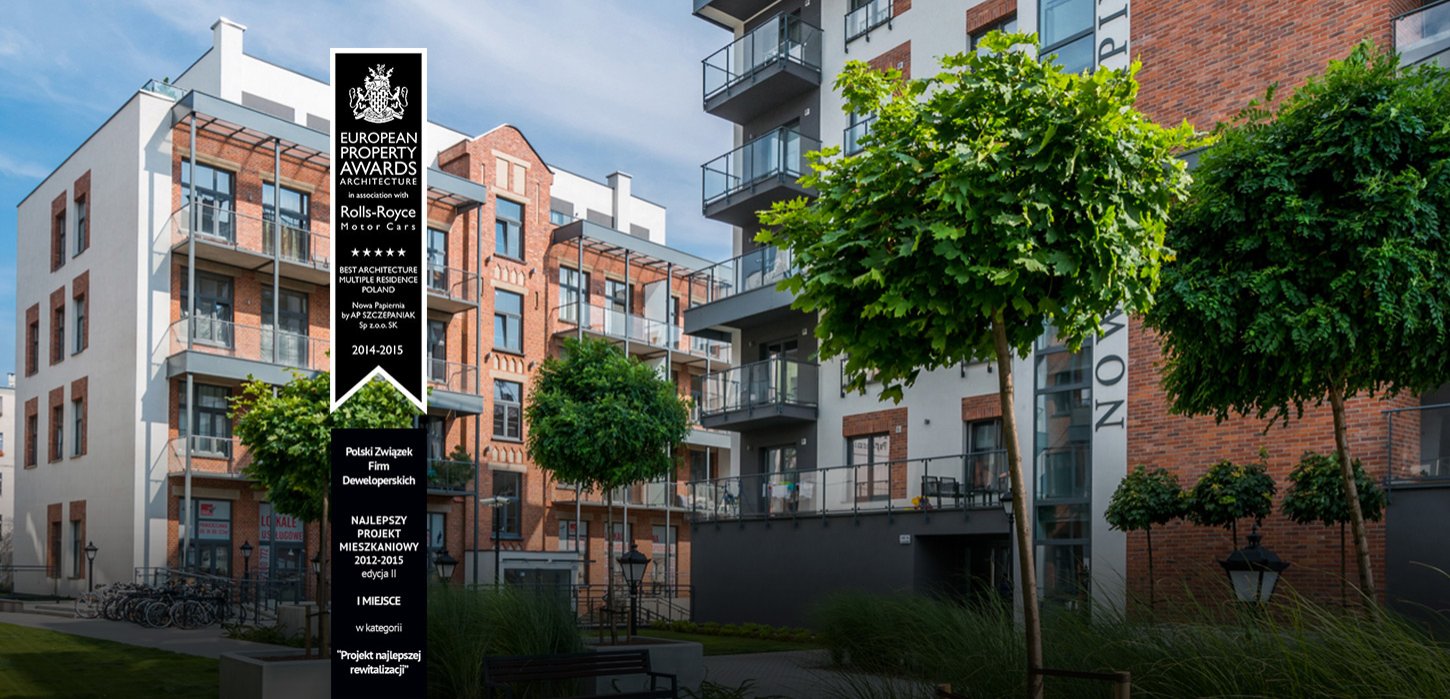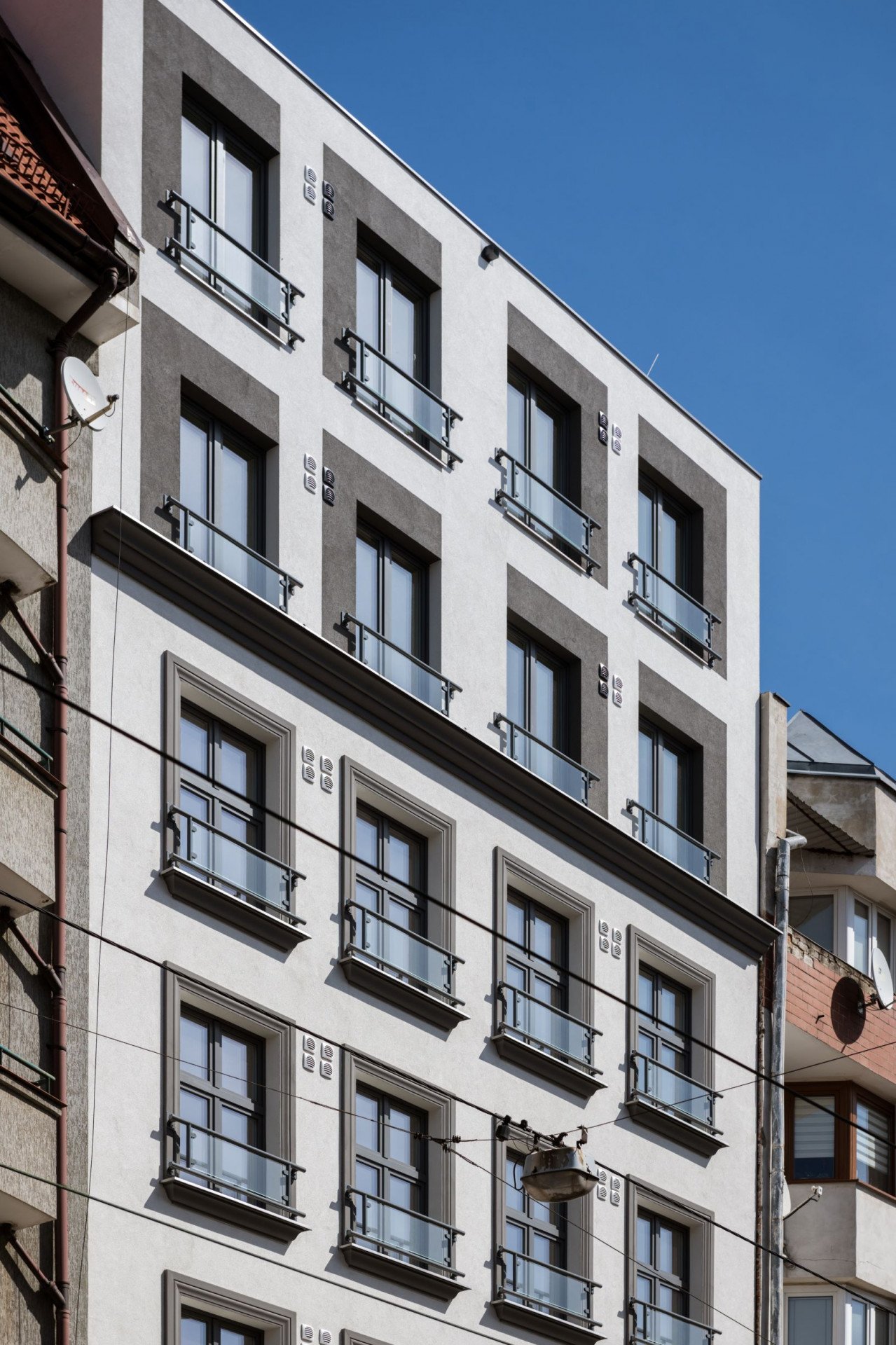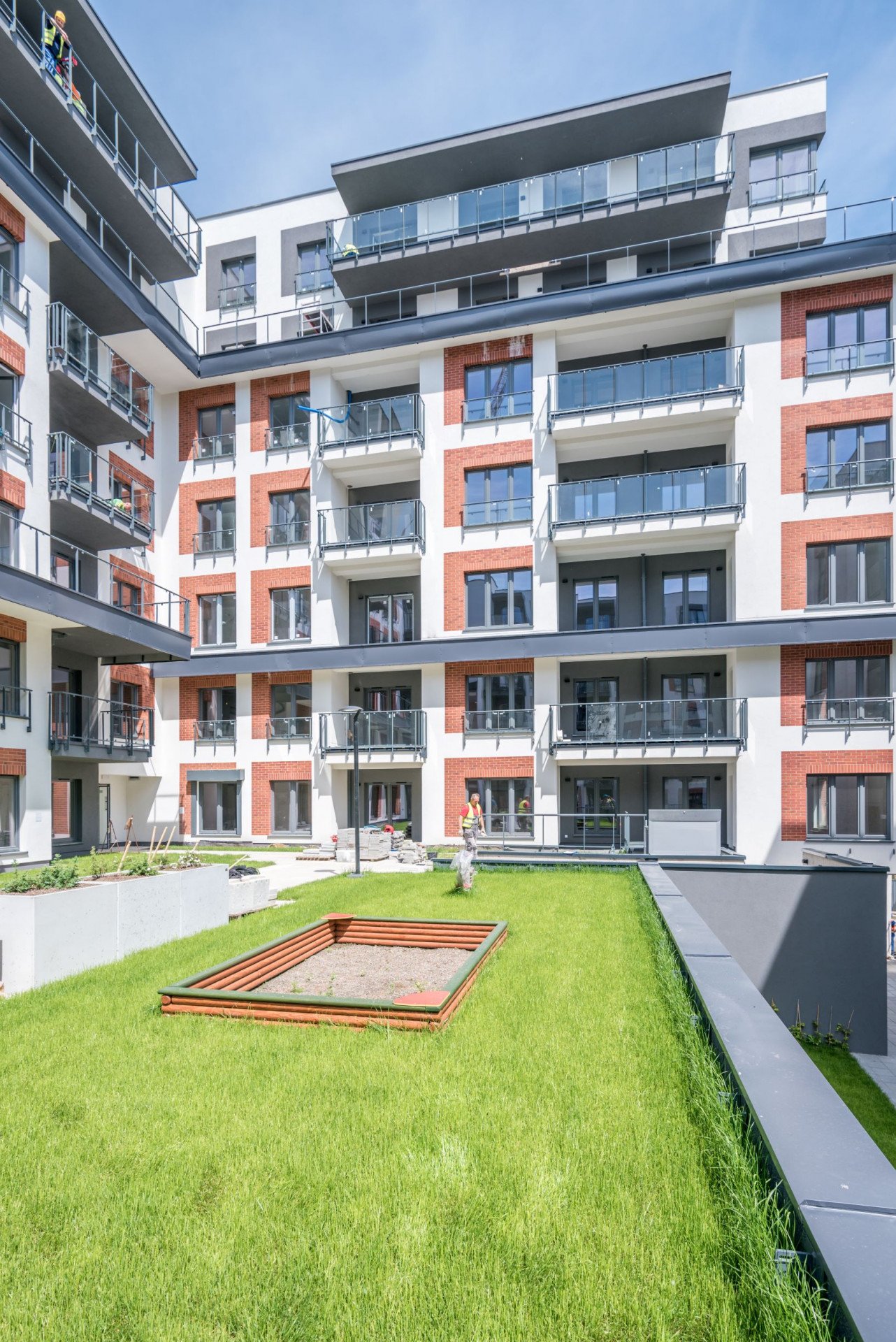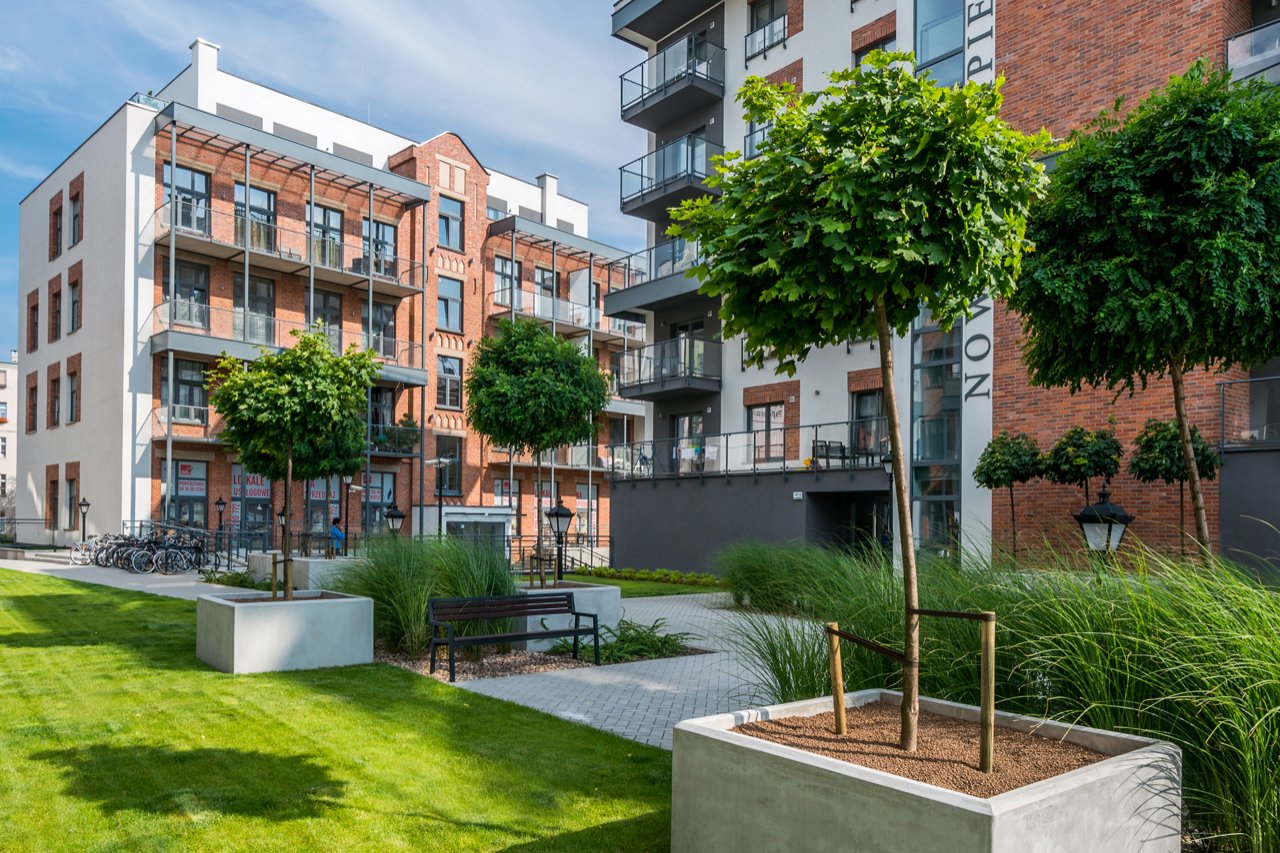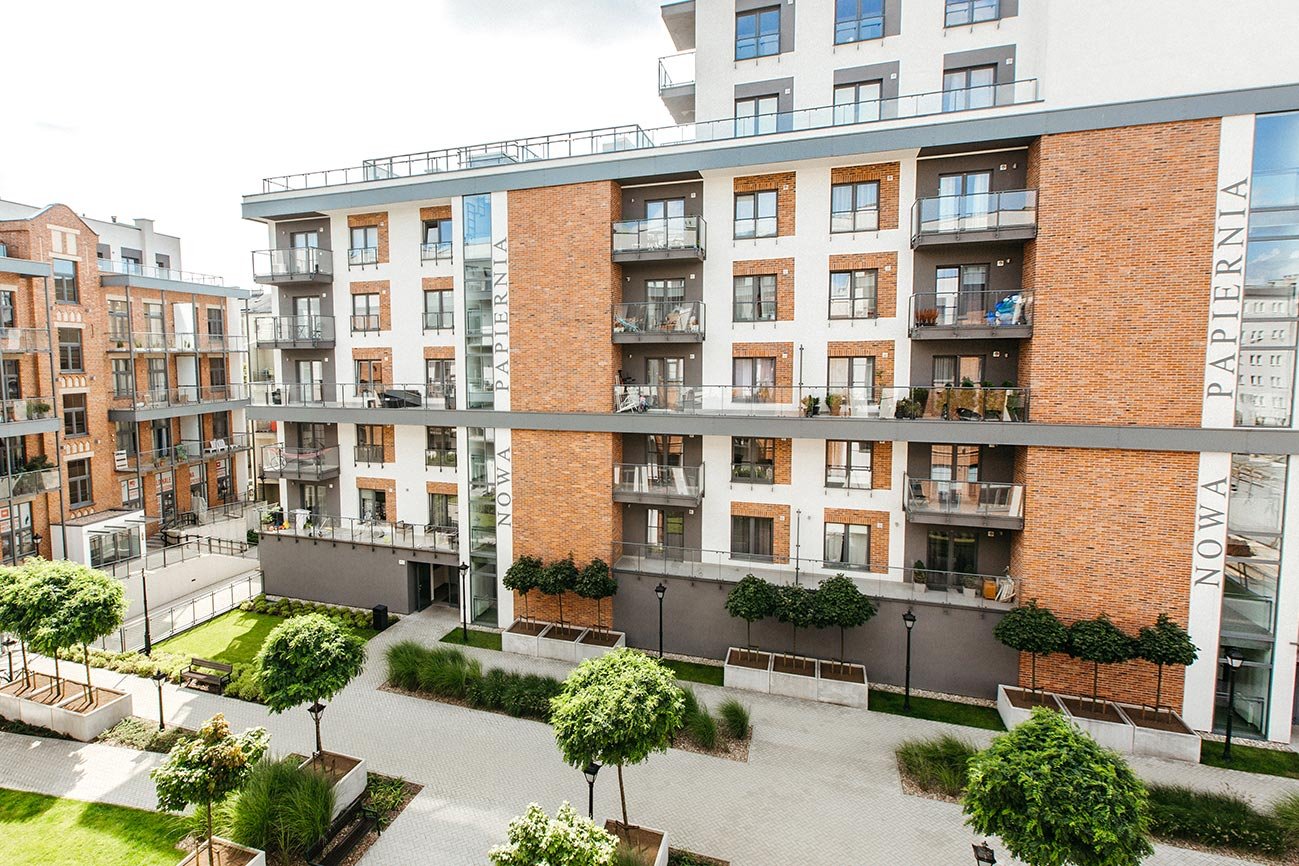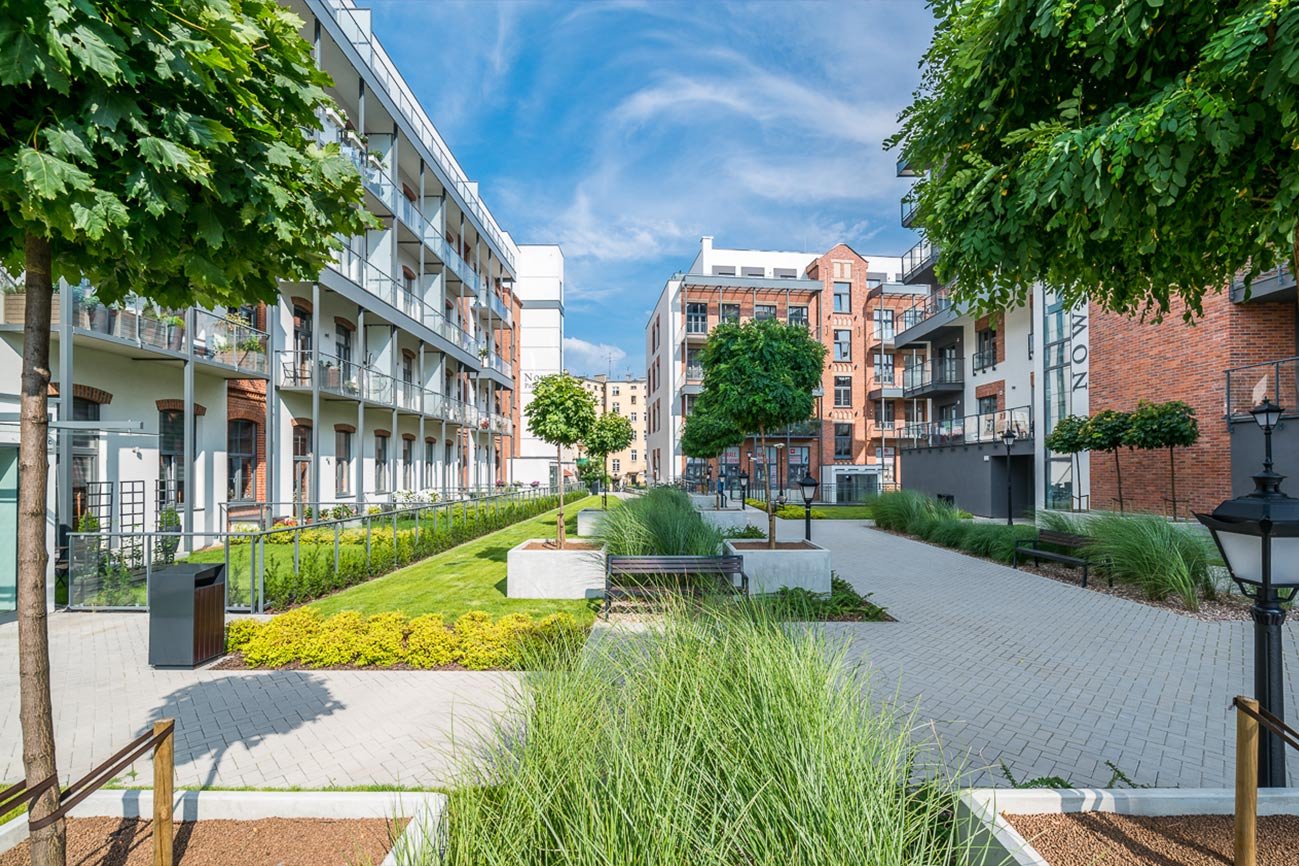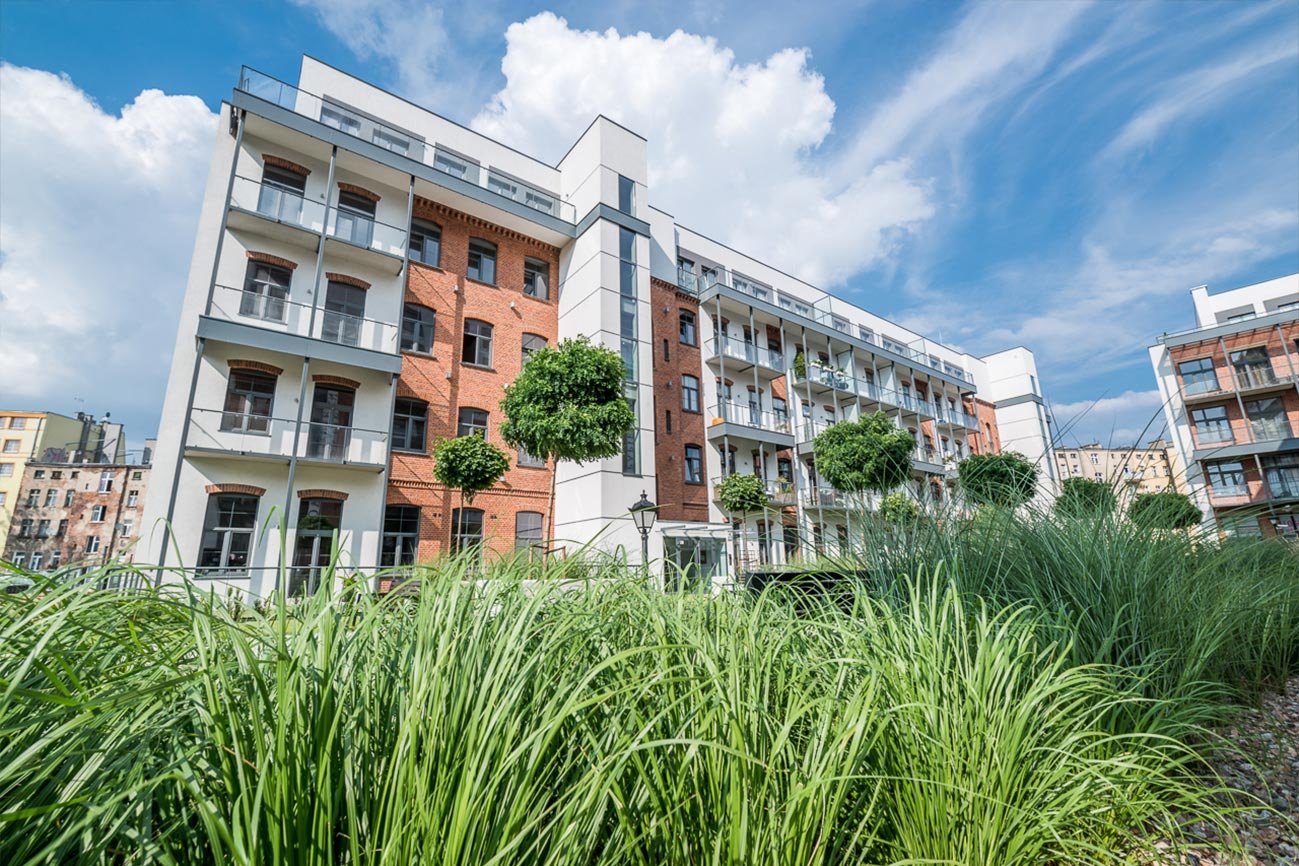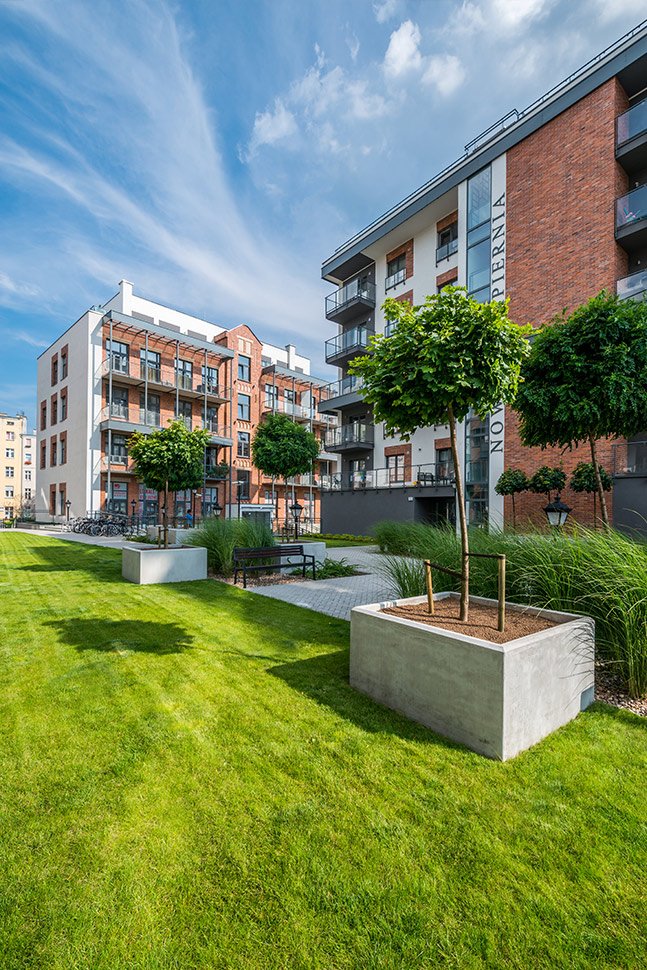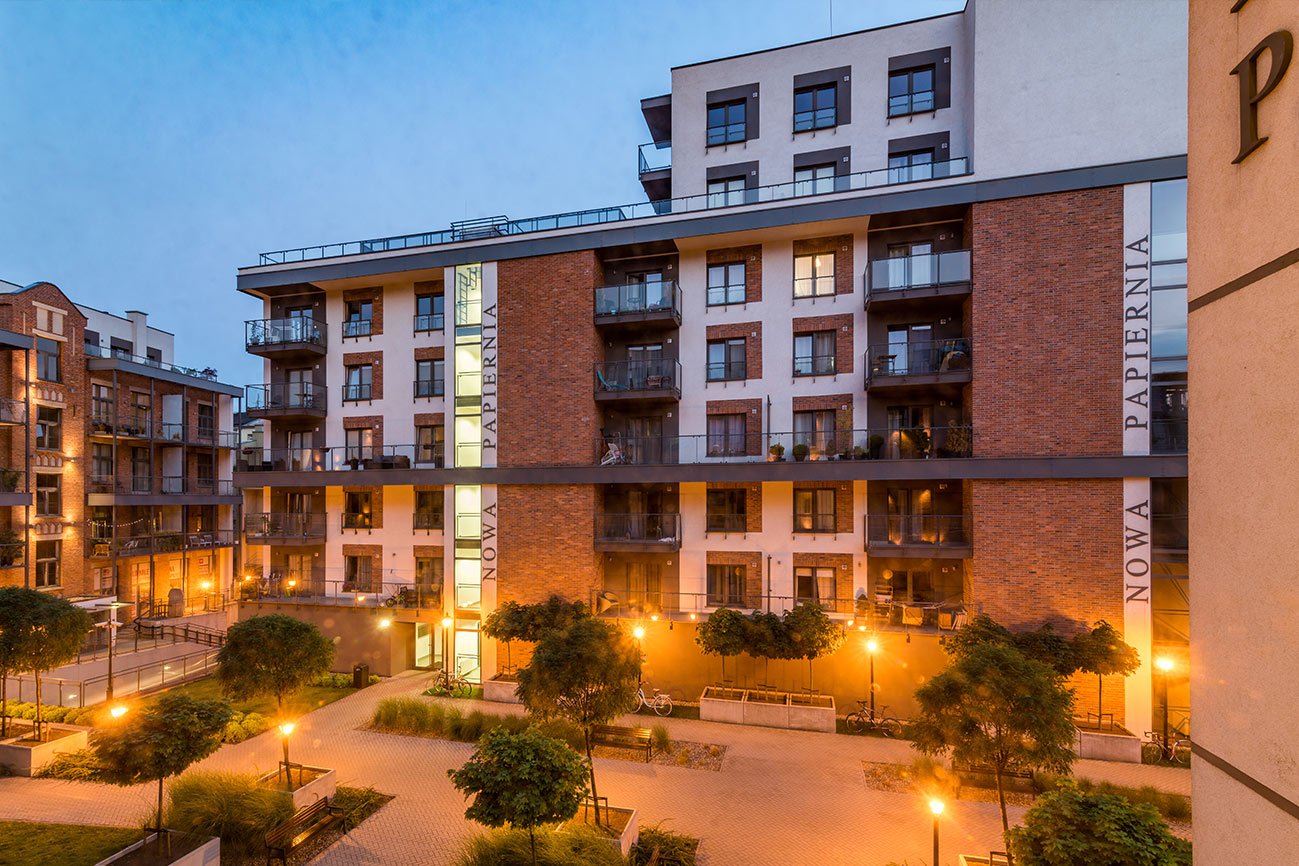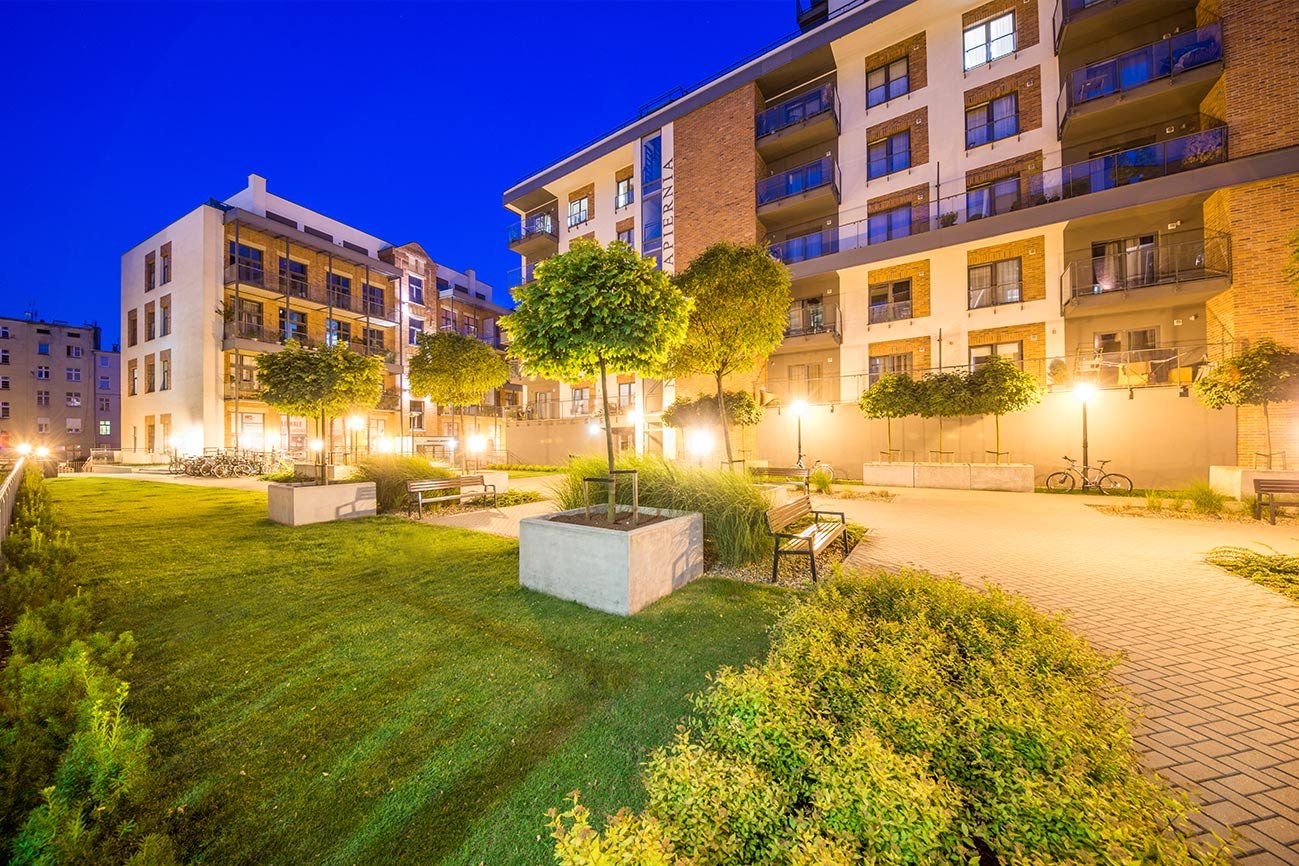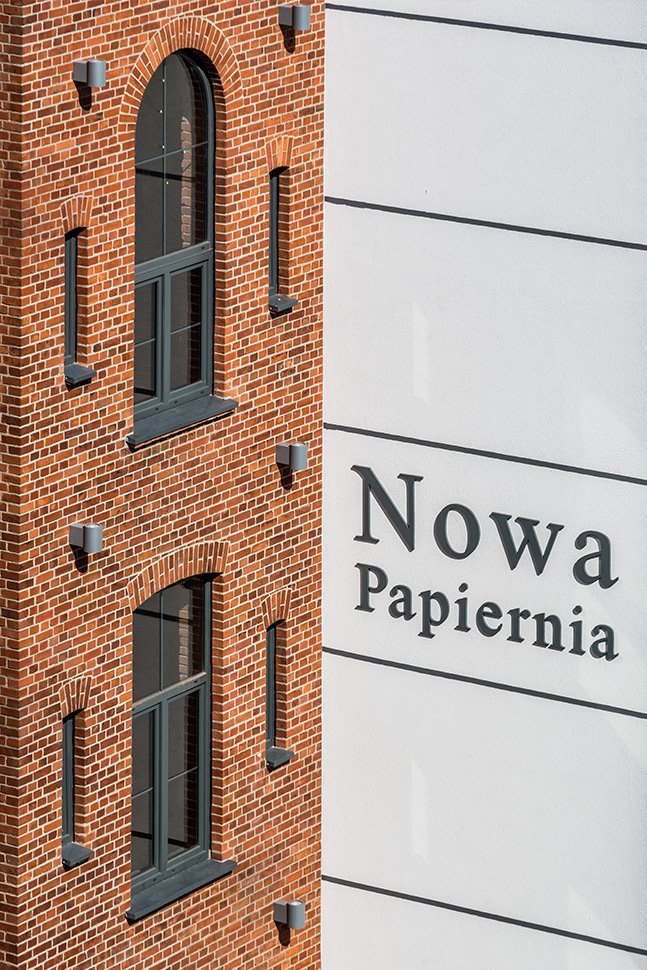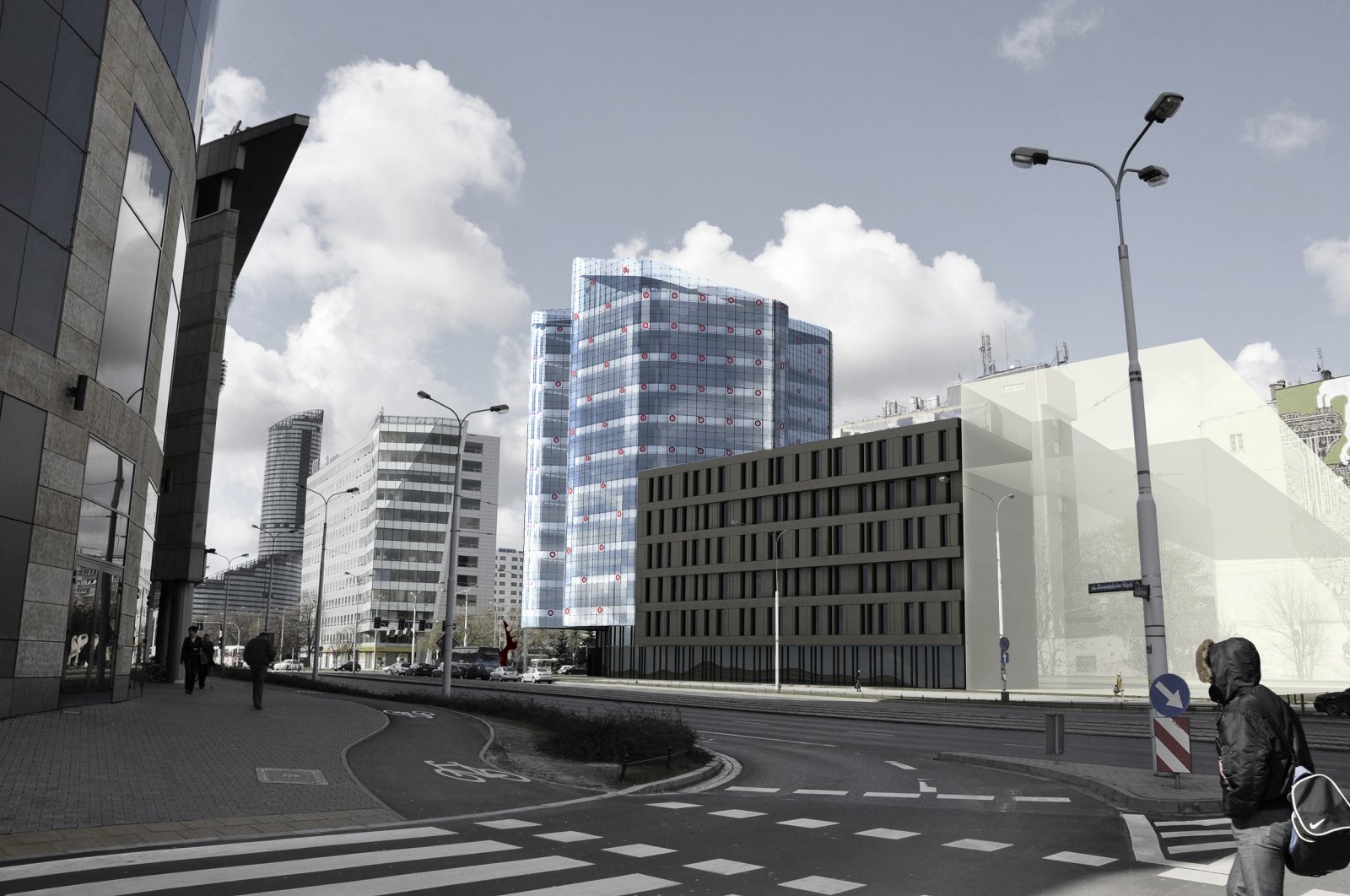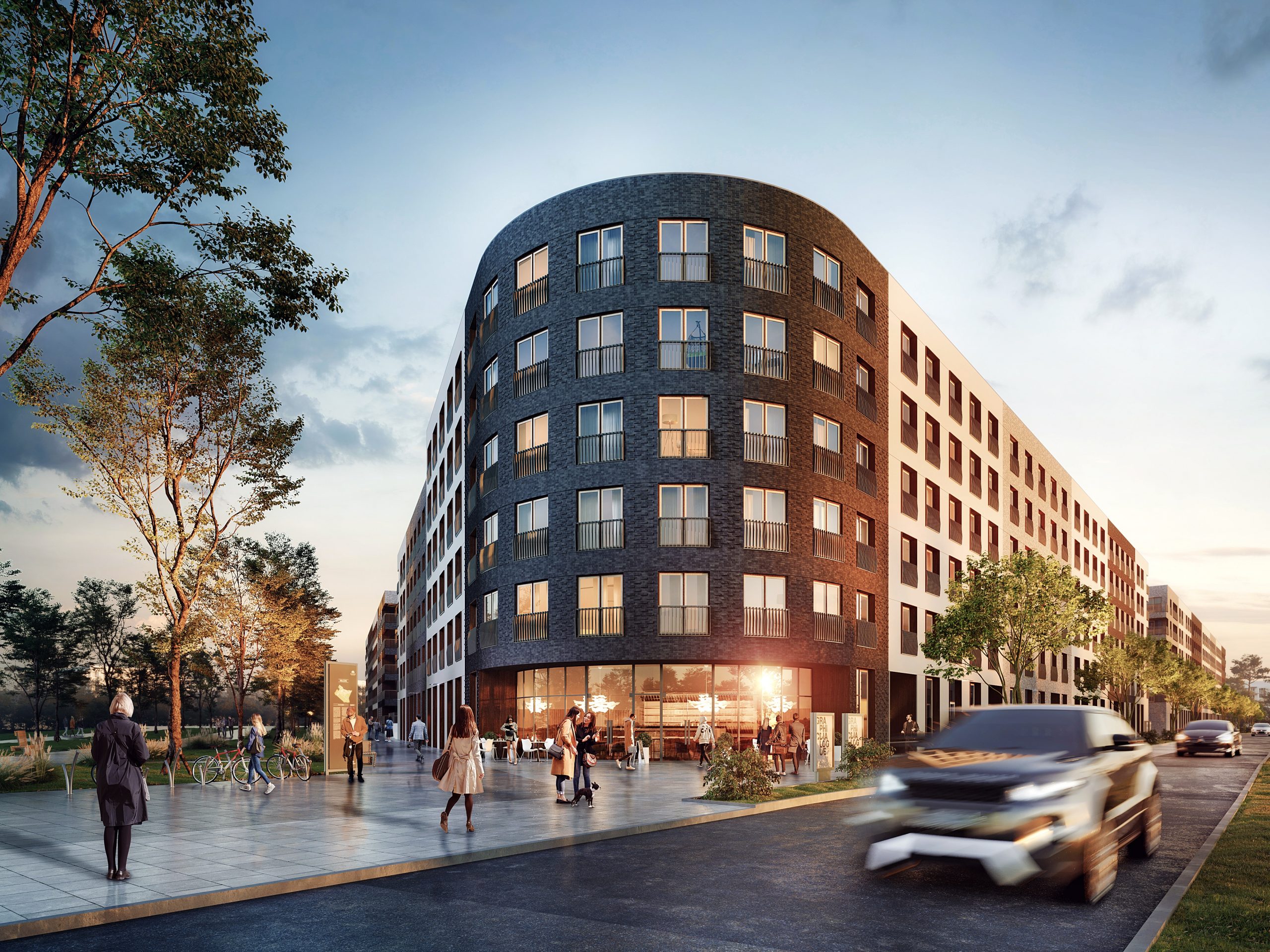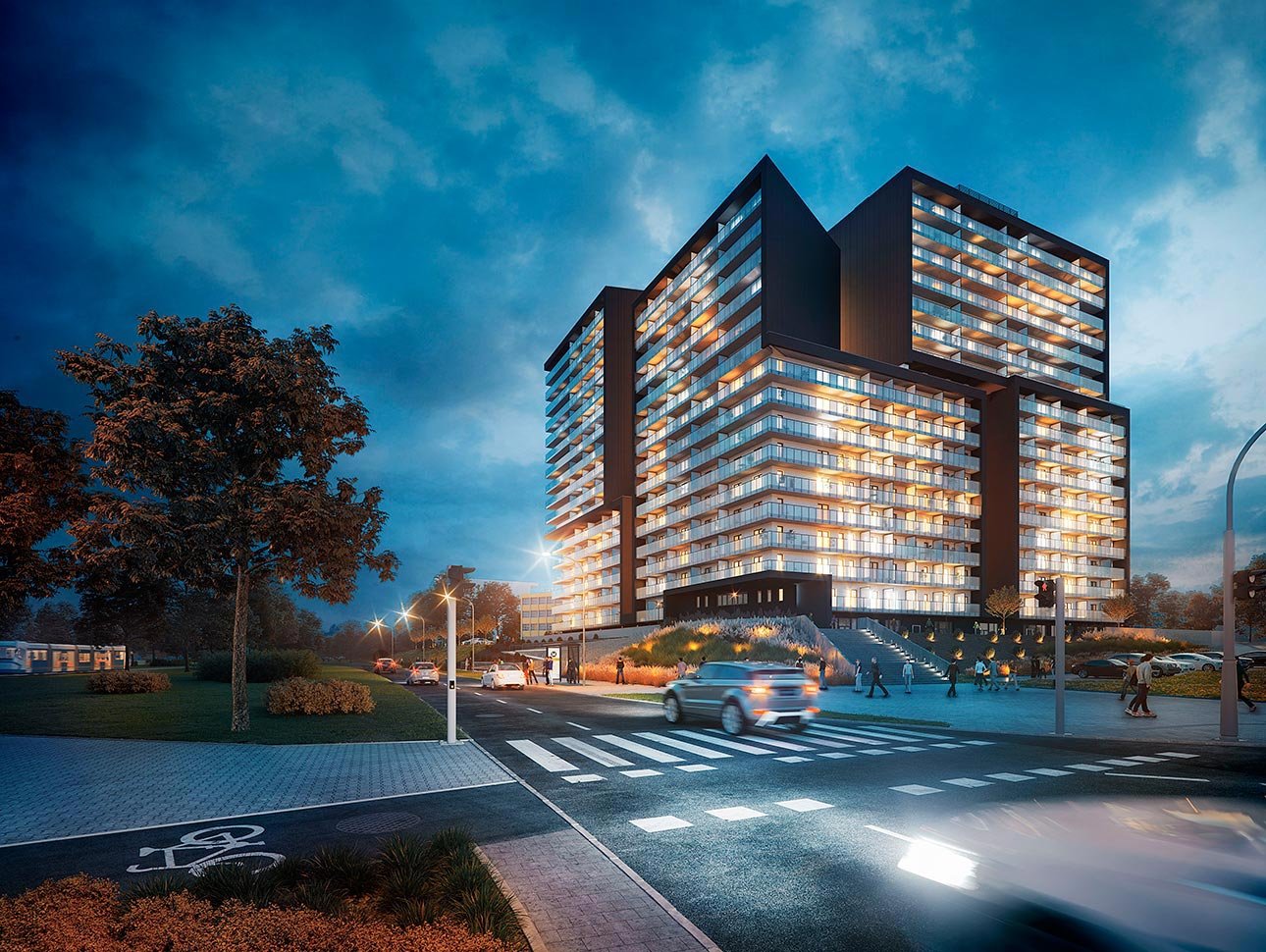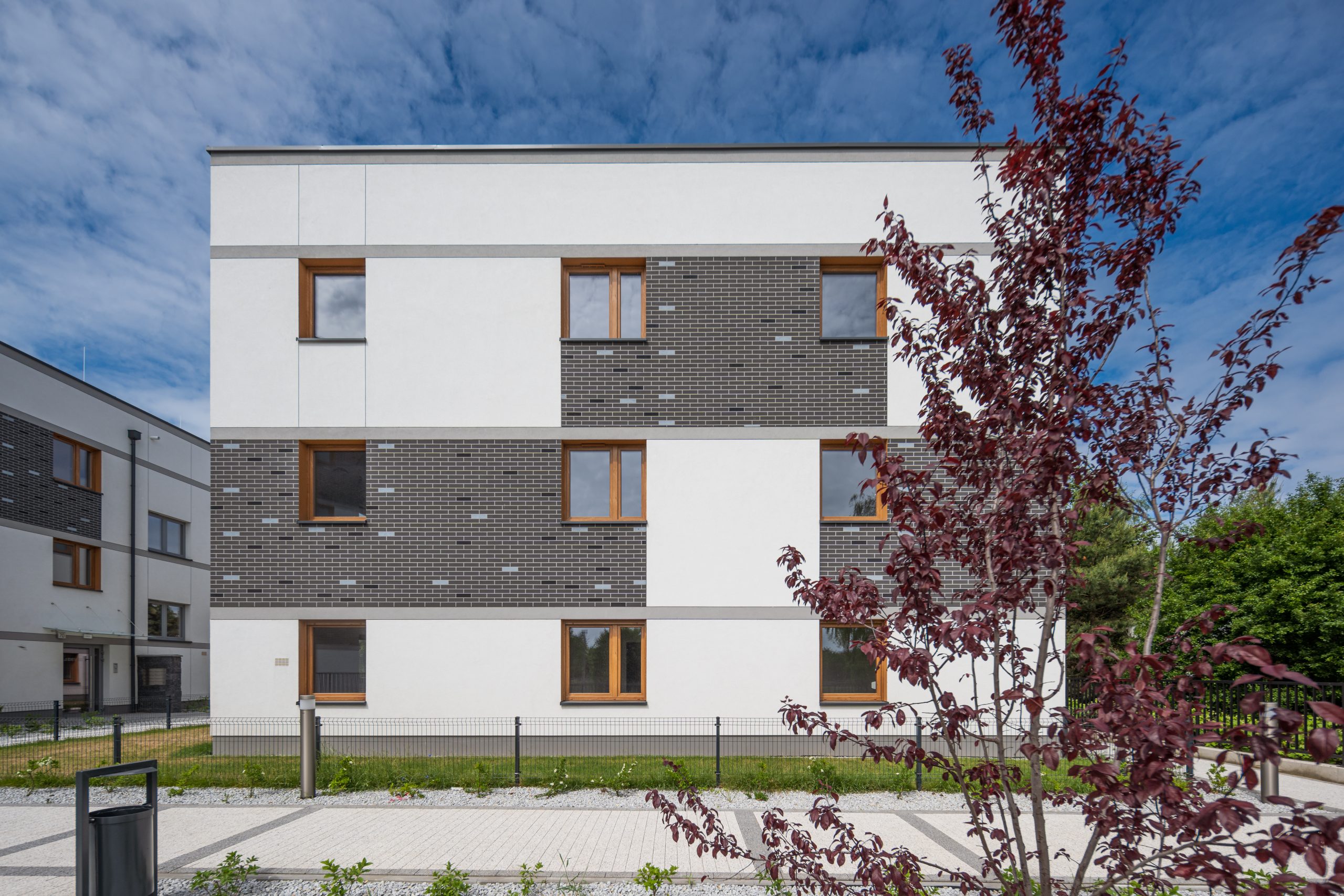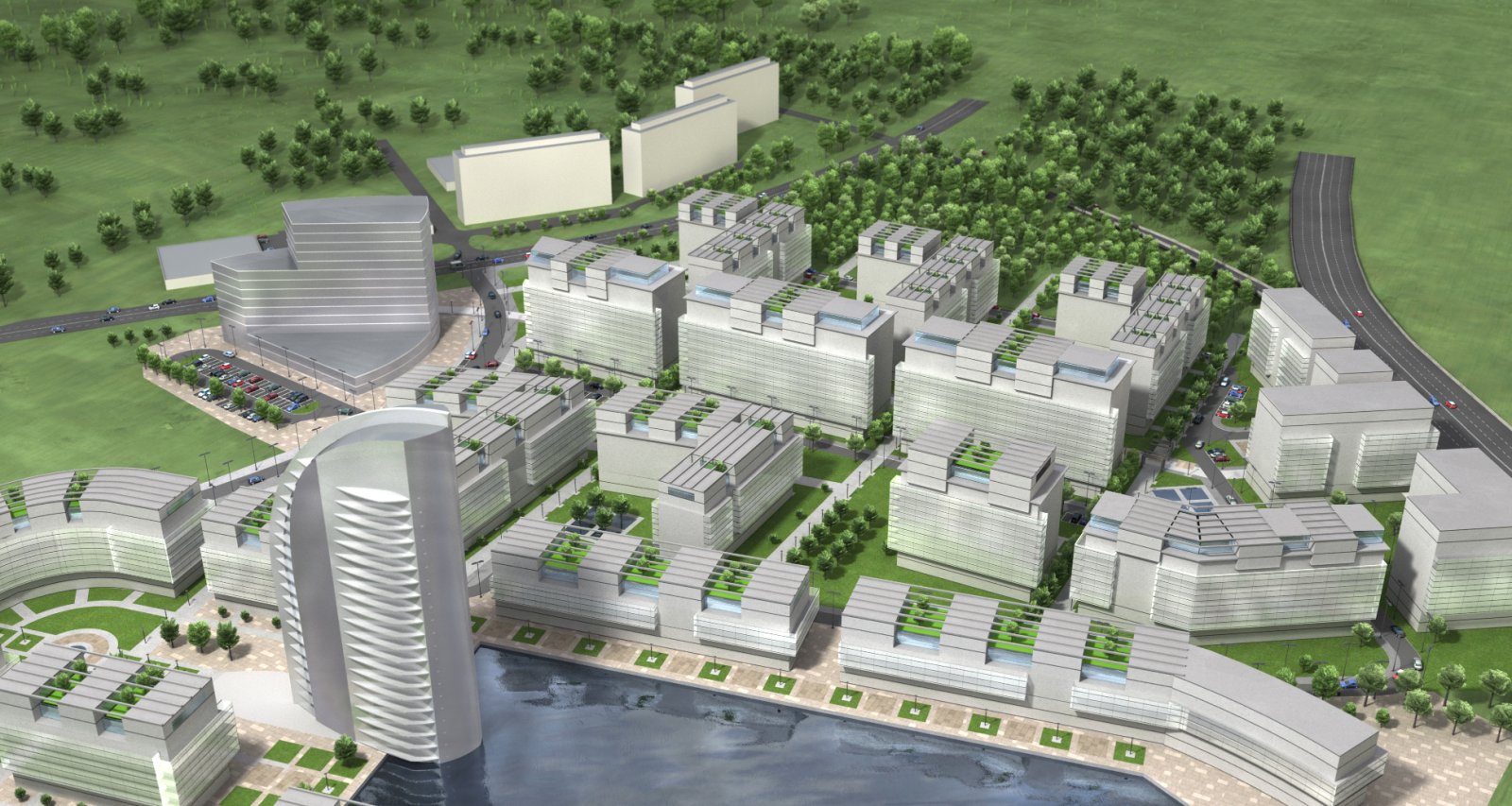Location and history
Wroclaw Suburb of Olawa is a district whose history dates back to the 12th century. At the beginning of its existence it was a place for locating crafts and later industry. It was there that Walloon weavers settled, there, thanks to the proximity of the Oława River, percale printing houses were established, and later textile, machine manufacturing and other factories. In the nineteenth century, the industry moved to the farther outskirts of the city, and the Olawa Suburb became a stately residential district built up with tenement houses that have survived to this day. After World War II, it was one of the few districts in Wroclaw that was not completely destroyed. In the following years it declined greatly. At the end of the 19th century, a printing house and a paper factory were built on a plot of land on Kosciuszko Street.
Function
The two buildings of the former paper factory underwent reconstruction and superstructure (marked A and B) along with an underground garage, and a new residential building was built (marked D) also with an underground garage. The investment has significantly raised the housing value for the entire residential interior of this part of the district. The elimination of vacant buildings and garages, as well as the introduction of new greenery and landscaping elements, has improved the safety of all users of the area.
There are 53 and 23 apartments in the revitalized buildings, and 53 apartments in the newly designed one. Some of them are apartments with terraces, including greenery. The smaller of the revitalized buildings has retail and service units on the first floor. Newly built garages accommodate 96 parking spaces, storage cells, cart and bicycle rooms and technical rooms.
Architectural form
The use of simple, even minimalist means of expression defining the new volumes does not disturb or interfere with the values of the existing historical fabric. Nowa Papiernia is an intimate complex that uses solutions of well-known industrial spaces. The facades and staircases of the building clearly refer to loft spaces, through the use of original materials adapted from the old paper factory. The rhythm of the structure and window openings lends harmony while the clinker rustic facade alludes to the original paper mill aesthetic. High residential floors provide more comfortable conditions for residents and make for a more dignified impact of the block. In addition, the buildings are not repetitive, each with its own individual layout and features. Balanced proportions and elegant architectural detailing make this architecture timeless and autonomous from prevailing styles and trends in architecture.





